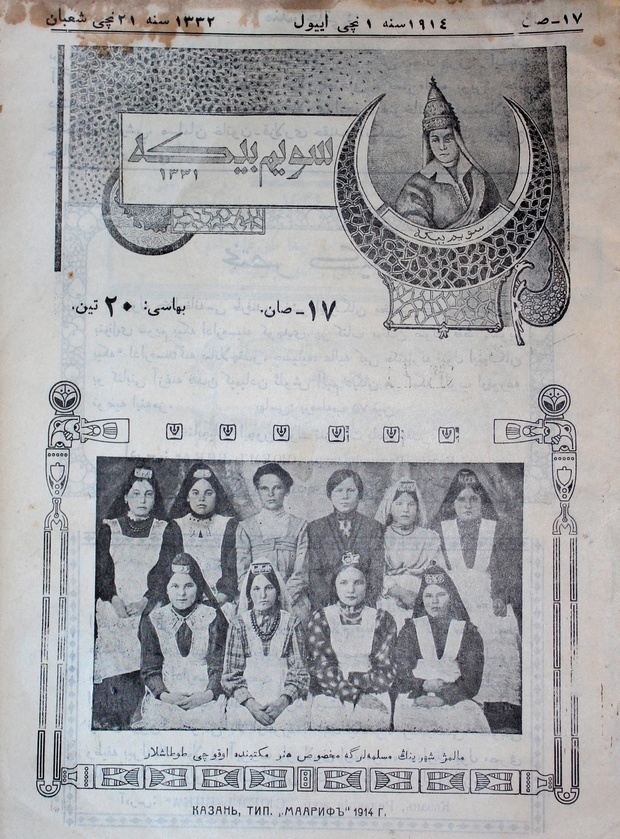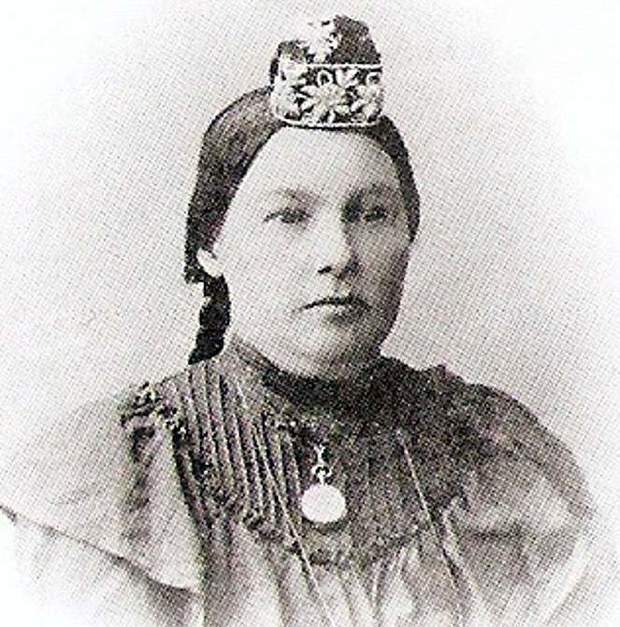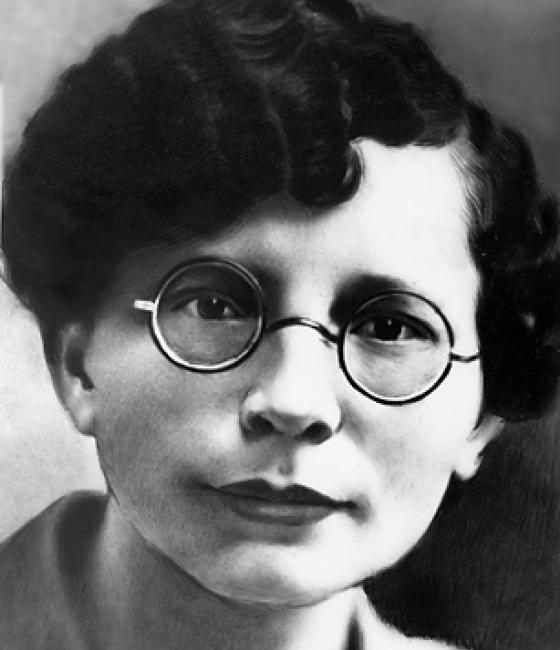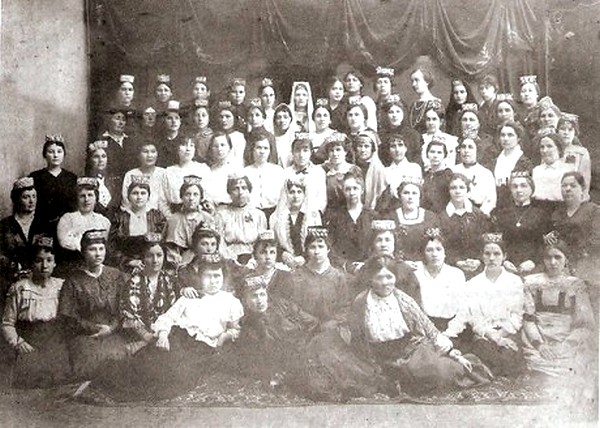‘At the beginning of XX century, the Tatar women were the most emancipated among all Muslims in Russia’
The birth of Tatar feminism: divorced leaders, a Soviet gynecologist in the Kingdom of Saud and the first women in retail
Today women can be found in almost any profession – at the counter of the shop, in a school, hospital, driving, in Parliament, at the lathe or in the ISS. A hundred years ago, it was hard to imagine, especially among Muslim women. About how the Tatar women 'knocked out' their rights, how the attitude of the people to the 'women's issue' was changing — in the article of a historian Liliya Gabdrafikova.
The result of the bourgeois reforms
One of the most urgent problems of Tatar society in the late XIX – early XX centuries was the 'woman issue'. When on the West women demanded equal voting rights, Muslim women got rid of chapans, opened the women's madrassahs and dreamed of monogamous family relationships. But many points in the women's movements were similar. In European countries, a condescending attitude to the female sex as beings with intellectual disabilities remained for a long time. Muslims did not teach women to write, believing that educated girls would start to write mash notes.
The awakening of women's consciousness was the result of the bourgeois reforms in Russia, modernization in all spheres of life, including religious and moral norms. So, at the time of the reforms, women from poorer strata of society began to join the ranks of male workers in factories and plants. Their children were not always sent to traditional maktabs and madrasahs but in factories and city colleges.
Daughters of nobles and officials since the late XIXcentury studied in Russian women's gymnasiums, showed themselves in charitable activities. Representatives of the clergy and the merchant classes received home education mostly. In this period, they opened their own women's schools and courses. In Kazan, there were schools of Magruy Barudiya, Magruy Muzaffariya, Lyabiba Khusainiya, Fatikha Aitova. The last school in 1916 was converted into a women's gymnasium. This was the first Tatar gymnasium in the whole Russia.

Women's literature
Men played a significant role in propaganda of the idea of feminism, especially intellectuals. At the turn of XIX-XX centuries, 'the woman issue' took place in the Tatar journalism and literature. Ismail Gasprinsky, Rizaetdin Fakhretddin, Gayaz Iskhaki, Fatikh Amirkhan wrote a lot about this issue.
What is more, men-writers took female pseudonyms to attract even more attention to this problem. For example, novelist G. Gafurov (Chygtai) published his story 'Tutam' ('My aunt') in 1905 under the authorship of some 'Galima'.
Some time later, the literature actually created by women appeared. In newspapers and magazines there were special women's pages. Sometimes these applications were edited by women. As, for example, Fatima Nauruzova in the Ufa newspaper 'Tormysh'. In October 1913, in Kazan the publication of women's magazine Söyembikä started.
Rural emancipation
As for rural areas, until 1914 in Tatar families there was a strict division of male and female responsibilities. A woman's world, as a rule, was limited by housework, and all the field and other work remained the prerogative of the husband.
But Tatar women living in the Central provinces of Russia were different. Men of these counties were mainly engaged in similar crafts, went to work in the capital and other cities. Therefore, women handled well with left duties, also they distinguished by a more liberated behavior. The living in a mixed ethnic environment contributed to this. It is no coincidence that the first woman-doctor (Razia Kutluyarova), and the first famous singer (Maryam Iskanderova), and the first female mathematician (Sarah Sokolova) were from Kasimovsky district of the Ryazan province.
Unsettled personal life of feminists
Emancipation changed the traditional female role.

Mukhlisa Bubi, the first and the only woman-kazyi (judge) in the Orenburg Mohammedan Clergy Assembly, was a divorced lady
If we turn to the fate of the Tatar feminists, some of them have not developed personal life. As a rule, they were either divorced or not married. Mukhlisa Bubi, the first and the only woman-kazyi (judge) in the Orenburg Mohammedan Clergy Assembly, was a divorced lady. Along with the terminations of marriages there were conflicts with parents: not all girls obeyed to their will. During the First World War, having quarreled with her parents, the poet Zakhida Burnashaeva (Giffet tutash) ran away from home, the future actress Ashraf Sinyaeva. Each of them made the professional destiny at their sole discretion.
Secular and religious disputes
In discussions about 'the women issue' the secular intellectuals advocated the full emancipation of Tatar women, reformers and kadimists, not denying the importance of women's education, stressed that women must be under male guardianship.
Theologian Musa Bigiev did not approve of 'too frequent figuring of women in the assemblies, balls, ballets, farces, plays, masquerades, dancing parties', but welcomed 'as in the highest degree a useful phenomenon of the presence of women with an open face in schools, universities, temples of science, in public meetings.'
On the one hand, jadids as well as kadimists downplayed the role of women in society, on the other, they show their special status, the need for protection.

Having quarreled with her parents, the poet Zakhida Burnashaeva (Giffet tutash) ran away from home during the First World War
The most emancipated Muslim women
The First World War became a boundary between home life of Tatar women and their activities outside the home (field, plant, factory, trade and other fields). The war greatly accelerated running processes of emancipation of Tatar women in the late XIX century.
If the representatives of the wealthy families in this period conquered a prominent place in political and cultural life and thereby have resolved their 'women's issue', material needed women went to work equally with men and redefined their gender roles there. The war forced women to master previously unknown works, for example, in agriculture, trade. There were women-vendors. Tatar women-teachers represented a significant socio-professional group. Despite the men's work on the home front, some women as nurses were sent to the front. So, an artist Hadicha Akchurina was missing on the Caucasian front.
By 1917, a working woman, whether she is a doctor or a teacher, was no longer perceived as a traitor of religious foundations. From 24 to 27 April 1917 in Kazan the All-Russian Congress of Muslim women took place. The delegates came from many different regions, also there were other 300 women delegates. They raised issues of equality between men and women, abolition of polygamy and bride price, women's right to divorce and other social problems. Tatars not only participated in women's congresses, but also began to participate in other public meetings. In this period, a singer Abruy Saifi was elected as the head of Ufa City Duma. She was the only woman included in the National Legislative Assembly – Millet Medzhlise. Also, in 1917, at the All-Russian Muslim Congress in Moscow, Mukhlisa Bubi became the first kazyi-woman (judge) in the Muslim history.

At the beginning of XX century, Tatar women were the most emancipated among other Muslims in Russia. They worked as doctors, teachers, actresses in Caucasus and the Middle Asia, they became an inspiring example for Muslim women in that regions. And even in the early 1930s, the gynecologist Amina Alimbekova was sent to work as a doctor in the Palace of the King of Saudi Arabia on the proposal of the People's Commissariat of Health of the USSR. All this was the fruit of the great work on 'women's issues' held in the Tatar society long before the revolutionary year of 1917.
Feminism among Tatars was largely was due to the desire of the men themselves to have educated and independent women, worthy representatives of the Tatar nation.
Reference
Gabdrafikova Liliya Ramilevna – Doctor of Historical Sciences, a chief researcher in Institute of History named after Sh. Mardzhani of the Academy of Sciences of the Republic of Tatarstan.